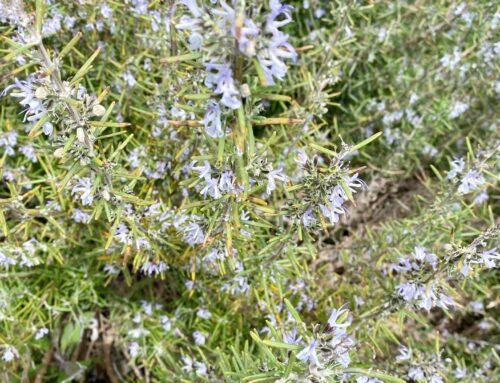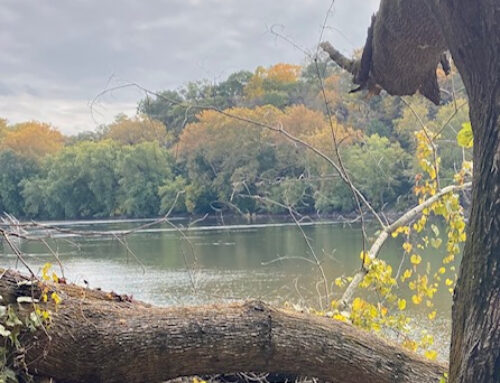During the Inaugural address on Monday, President Obama surprised many listeners with the following statement:
We will respond to the threat of climate change, knowing that the failure to do so would betray our children and future generations. Some may still deny the overwhelming judgment of science, but none can avoid the devastating impact of raging fires, and crippling drought, and more powerful storms… America cannot resist this transition; we must lead it… That is how we will maintain our economic vitality and our national treasure—our forests and waterways; our croplands and snowcapped peaks.
For decades on Capitol Hill, climate change discussion has amounted to one side waiving scientific reports, while the other presses hands over ears chanting “La, la la! I can’t hear you!” Before anything is ever accomplished, meaningful discussion becomes lost in the weeds.
But successful policies could be hiding in those very weeds. It’s through literal weeds— though mostly grasses and crops—that we could rapidly accelerate carbon recovery from the atmosphere. At the same time, the establishment of perennial grasslands and vegetative ground cover could provide an economic boost to a struggling economy. It’s no longer a stretch to say that grass farming could be the ultimate ‘grass roots’ movement.
Who could forget their 9th grade Biology lessons? Photosynthesis occurs when plants take in sunshine, carbon dioxide and water, and release oxygen as a byproduct. The carbon is turned into plant roots and leaves, and subsequently returned to the ground. In a nutshell, carbon is transformed into things such as… well… nutshells.
But plants can’t vote. So why should our Federal Government care about photosynthesis? This article, gleaned from a study published in Nature Magazine, gives us a glimpse into the enormous potential:
Plants form a major part of the global carbon cycle in which carbon is continuously recycled and reused by plants and animals, the oceans and land. Carbon pollution from burning fossil fuels and burning forests adds to the CO2 in the air, disrupting the balance that keeps the planet warm. The team’s finding suggests plants absorb 16 to 19 times mankind’s total CO2 emissions, underscoring the powerful role they can play in regulating the climate.
Being a carbon-based organism myself, this whole photosynthesis thing strikes me as rather important. In fact, it’s how the oil, gas and coal we currently use—the primary culprits contributing to an over abundance of greenhouse gasses—came to exist in the first place (fossil fuels being decayed, ancient vegetation). And it’s this same oil, gas and coal, coincidentally, that has our politicians covering their ears and shouting “I can’t hear you!” at each mention of fossil fuel alternatives. Yet, photosynthesis created these carbon fuels, and photosynthesis can recapture them. Millions and millions of metric tons of it. For free.
To all the bickering, grid-locking politicians out there, let me break down this “science” for you. Carbon in the air: Bad. Carbon in the ground: Good. The one sided conversations must end. If you take carbon out of the ground, then carbon must return to the ground.
To borrow a fiscal cliff analogy, how long can we withdraw money from the bank, without putting any back in? This is exactly how we treat our natural resources, especially our soils. Listen up, Washington. It’s time to stop taking, and time to start putting it back.
And this is where economics should play a vital role. America’s farmers are uniquely positioned to help; they already grow plants that efficiently filter carbon from the air. The stage is set for farmers to become champions of sustainability, shepherding excess carbon back into the earth. But we must adopt policies that help keep it there.

This fun photo is borrowed from: https://eo.ucar.edu/kids/green/cycles6.htm
By emphasizing carbon capture, farms can boost future fertility, ensuring long-term national food security. As organic matter (carbon) is returned to the soil, more rainwater will be absorbed and retained, reducing the impact of devastating droughts. Relevant: The Drought of 2012, An Organic Farmer’s Perspective. Productive farms are economic engines, hiring lots of workers, supporting local economies, and facilitating a plethora of secondary jobs (transportation, processing, food service, etc.).
If Washington is ready to become a leader on climate change, here are several ways it can reach out to farmers:
● Encourage practices such as no-till farming and cover cropping. If grain farms remain subsidized, then let’s make sure they follow these best-use strategies for sequestering and retaining carbon. Reward farmers who keep a constant vegetative cover over their soil.
● Speaking of subsidies, let’s level the playing field for sustainable and organic farmers. Corn, soybeans and wheat all have price supports. Why not heirloom tomatoes? How many more farms—and additional opportunities for carbon capture—would exist if small scale producers had the economic safety net of their larger peers?
● Enact small-scale standards for butcher shops, allowing greater access to grass farmers who raise pasture-finished livestock. Should the vast majority of our meat come from only a few enormous processing plants? 600 million acres of under-utilized rangeland and pasture could be capturing carbon if more processing access is provided to our farmers and ranchers.
At long last, Washington seems willing to roll up its sleeves and get its hands dirty. America’s farmers can certainly show them how. This could be the ‘grass-roots’ opportunity of our era.
UPDATE on 2/13/13: This new report from Animal Welfare Approved does a great job of expanding on many of these principles, as does this Ted Talk video.











Leave a Reply